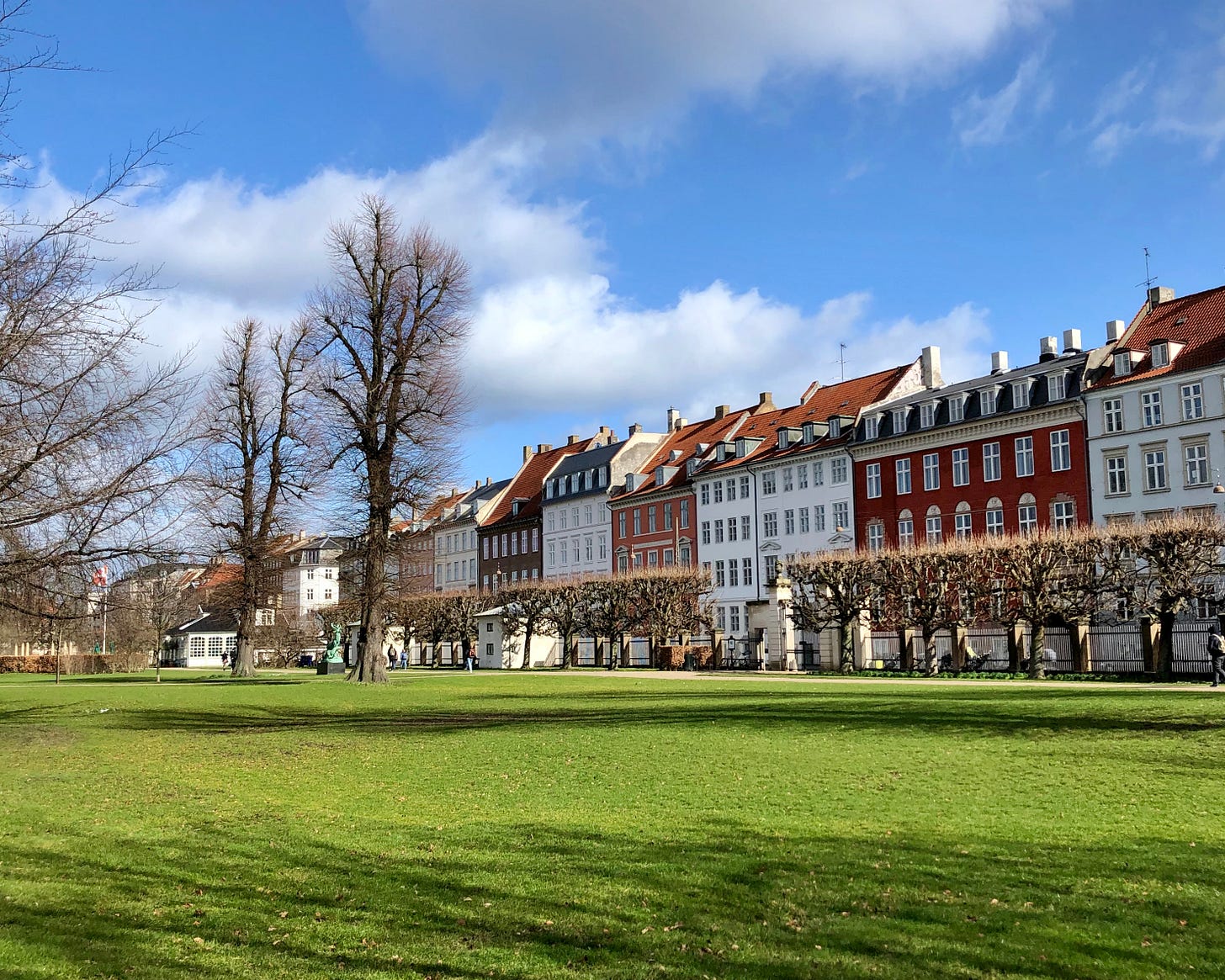I’m writing this newsletter from Copenhagen, where I’m on the tail end of a somewhat spontaneous week-long visit. I’m proud of myself for taking this trip, which was prompted by a combination of cheap airfare, friends who live here, and the desire to visit someplace new. Denmark is as charming and chilly as one might expect, and I’ve had a wonderful time. But getting here wasn’t easy.
Although I’ve traveled internationally on my own plenty before, the hours before my departure left me overwhelmed by logistics, stressed over what to pack, and worried about the myriad things that could go wrong.
“Are you looking forward to your trip?” my partner asked me the night before I left.
“I ... think so?” I replied, momentarily surprised by how fast my heart was beating and how anxious I felt.
“Don’t forget to breathe,” he said.
The line between anxiety and excitement can be deceptively thin. I sometimes struggle to tell the sensations apart, which makes me feel silly—shouldn’t I know the difference?
Thankfully, I'm not alone in feeling this way. In Learning to Walk in the Dark, Barbara Brown Taylor writes, “The only real difference between Anxiety and Excitement was my willingness to let go of Fear. Sometimes, when I was anxious, all I had to do was take a deep breath and my nervousness turned into anticipation.”

A few days before Copenhagen, I took a breathwork class at a nearby yoga studio. I wasn’t sure what to expect from two hours of guided breathing, but I challenged myself to go in with an open mind.
The class was held in a room with wooden floors, brick walls, and a soaring ceiling. There were candles scattered everywhere, and a circle of intention cards placed in the middle of the room. Surrounding that was a circle of folded blankets, each marking where people would set their yoga mats. My partner, a musician, was also in the room. He anchored the circle, in a spot where he’d later layer guitar, beats, and other soothing ambient sounds during the session.
The breathwork instructor had a calm presence, and told us what to expect during the class in a soft and comforting tone. She described the breathing techniques we’d use, and explained that we’d start seated but spend most of the time laying down with our eyes closed. Then, she listed a series of reactions we might have.
“You may feel like you have to pee, or cry, or laugh, or maybe even scream,” she said, maintaining the same gentle, even tone. “You might cough or feel a tickle in your throat,” she added. “If at any moment you feel overwhelmed, just raise your hand, and I’ll come right over.”
I was having trouble keeping my mind open at this point—wait, did she say scream?—but I tried to relax and trust the experience. For what it’s worth, no one in our class audibly laughed or screamed, but there were a few coughs. I did have to pee, and I cried—a lot.
Two hours of conscious breathing was, overall, an overwhelmingly positive experience for me. It unlocked emotions I hadn’t fully processed around Jamie’s death, and fittingly so. He died because his heart didn’t receive enough oxygen. I had never really allowed myself to consider what that might have felt like.
As my lungs filled with air, my heart filled with gratitude. How lucky am I to be able to breathe? How often do I even consider my breath?
After the class was over, I thanked the instructor and told her about Jamie.
“You’re breathing for him now,” she said.

The night before I left for Copenhagen, I was jittery—my heart and mind were racing. I was firmly on the anxiety side of the line, far from excitement. Then I took a deep breath, like my partner kindly reminded me to, and everything slowed down. My trip suddenly seemed less scary, and more full of possibility.
For the next week overseas, I focused on my breath whenever I felt overwhelmed or simply needed to take in the scenery.
Confusing train station? Inhale. Beautiful old castle? Exhale. Blast of cold air? Inhale. Cup of warm coffee? Exhale.
I’m grateful that I was able to take this trip, and for all of the anxiety- and excitement-inducing moments that got me here. Those moments reminded me to breathe, which, in turn, kept me grounded and present.
I’m heading home today. I’ll take a lot of deep breaths on the flight and reflect on the wonderful past few days. I’ll inhale and I’ll exhale, and I’ll repeat it all over again.
xoxo
KHG
p.s. If you’re enjoying My Sweet Dumb Brain, please consider recommending it to a friend. You can also share today’s essay on social media. Tak! (That's "thanks" in Danish.)
Good job, brain
I'm currently reading: Educated: A Memoir, by Tara Westover. I’ve heard such good things about this book, and it doesn’t disappoint in the slightest. It’s hard to put down!
I’m currently inspired by: Denmark, and all of the beautiful sights I saw this week. Some favorites included the Louisiana Museum of Modern Art, Black Diamond library, Frederiksborg Castle, and every bustling bike-filled street I walked along.
I'm currently aiming to: Keep breathing.
Additional resources
Learning to Walk in the Dark is a quick and thoughtful read, especially for anyone trying to figure out their own relationship with religion and spirituality. (Thank you for the book, Nation!)
“Slow, deep breathing is probably the oldest folk remedy on Earth.” This article on the benefits of conscious breathing is great.
The breathwork class I took was led by the lovely Dani Mae, who’s launching a project soon around the power of breathing.
Oh, and my flight to Copenhagen was just $350 round-trip, thanks to Scott’s Cheap Flights. Get on it!
For your sweet dumb brain
When was the last time you paid attention to your breath? Take a few precious minutes right now to focus on your breathing. Breathe in with your nose, pause, and then breathe out slowly with your mouth. Repeat. If it’s helpful, I like to use this simple gif as a guide.




